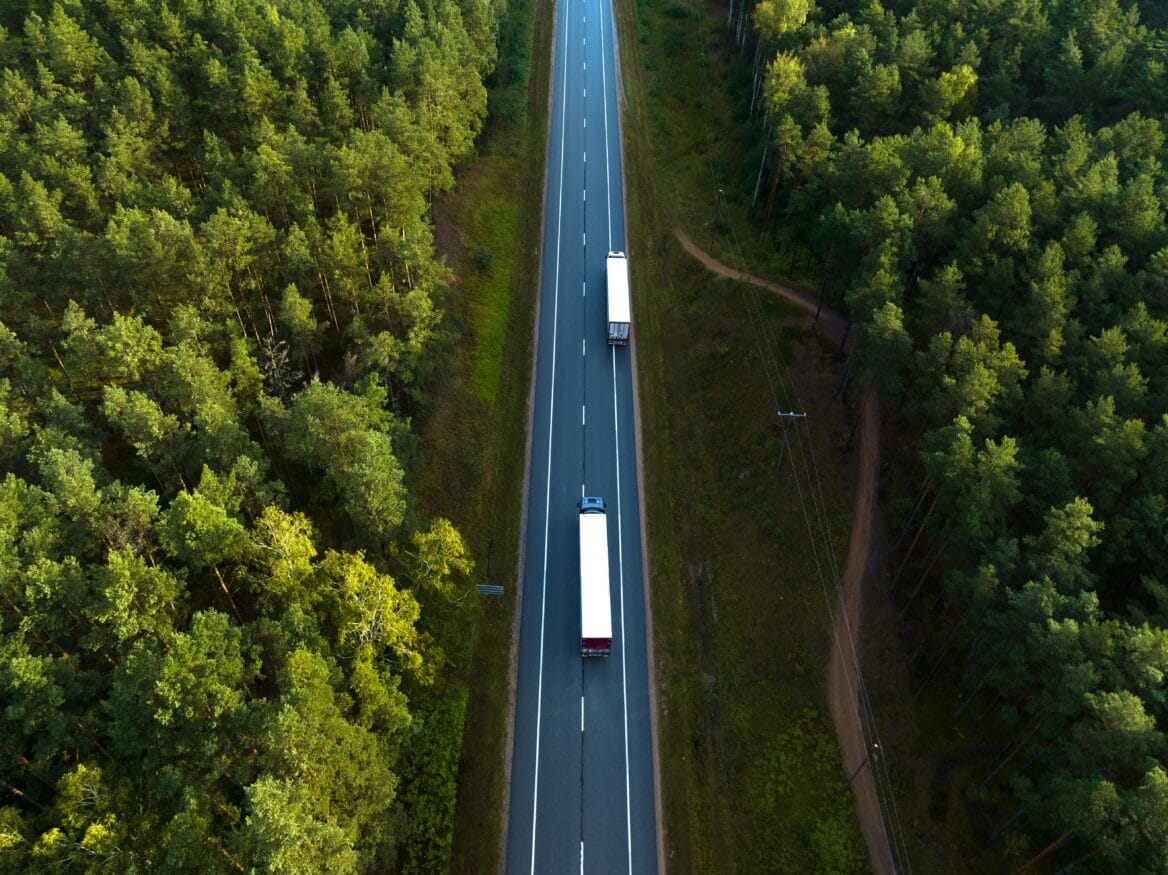June 5th marked World Environment Day, an opportunity to reflect on how every industry can contribute to a more sustainable future. Among the sectors with the greatest environmental impact, yet also immense potential for improvement, is logistics: a critical engine of the global economy that’s becoming increasingly digital and automated.
In a field where time is money and operational efficiency is paramount, sustainability it’s a strategic advantage. Choosing the right eco-friendly IT infrastructure allows logistics companies to increase resilience, reduce operating costs, and improve competitiveness.
According to Gartner, while 56% of Forbes Global 2000 companies have set net-zero targets, by 2026, 80% are expected to revise their interim goals due to lack of planning and underinvestment in digital infrastructure
So, what are the most effective strategies to build an environmentally friendly IT infrastructure in logistics?
1. Sustainable Cloud: Less Hardware, Greater Efficiency
The shift to cloud computing is revolutionizing logistics, enabling real-time tracking, inventory automation, and data-driven decision-making. But beyond operational agility, the cloud offers a powerful path to reduce carbon emissions, especially when deployed with sustainability in mind.
Cloud-powered technologies can help eliminate up to 32 metric gigatons of CO₂ by 2050, nearly half of what’s needed to reach net-zero globally.
Practical steps for logistics companies:
- Partner with cloud providers that power data centers with renewable energy.
- Use container-based or serverless architecture to minimize idle compute time.
- Deploy auto-scaling to dynamically adjust resources based on real-time demand.
The result? Lower emissions, smarter scalability, and real cost savings.
2. Hardware Lifecycle Management: Refresh and Recycle
Outdated IT hardware like legacy servers, networking equipment, or unoptimized edge devices consume more energy, slow down operations, and increase maintenance overhead.
Upgrading to energy-efficient equipment can yield 30–40% reductions in power consumption across infrastructure.
What to do:
- Schedule hardware refresh cycles every 3 to 5 years for critical systems.
- Invest in low-power, industrial-grade edge devices for field use.
- Collaborate with certified recycling programs for responsible e-waste disposal.
Good lifecycle planning = lower TCO, better uptime, greener footprint.
3. AI for Smarter Energy Optimization
Artificial Intelligence (AI) enhances logistics through route optimization, demand forecasting, and predictive maintenance. But it can also dramatically optimize energy use, reducing waste and maximizing system performance.
Integrating AI into facility systems such as HVAC and lighting has led to significant reductions in energy waste and CO₂ emissions.
Use cases:
- Predictive AI to shut down idle devices in warehouse or IT environments.
- Smart temperature regulation for cold storage or data centers.
- Intelligent workload balancing to avoid resource overutilization.
A smart infrastructure not only performs better, it consumes less.
4. Sustainable Cybersecurity: Efficiency Through Protection
Security breaches result in downtime, data loss, and costly disruptions, not just financially, but environmentally, due to the energy waste involved in recovery, redundancy, and overprocessing.
An efficient cybersecurity strategy is automated, scalable, and light on energy consumption.
Sustainable best practices:
- Adopt centralized identity and access management (IAM) to streamline authentication, reduce redundant systems, and improve energy efficiency.
- Automate updates and security patches to avoid inefficient manual interventions.
- Choose lightweight, cloud-native security tools that minimize infrastructure demands.
A secure system is a sustainable one: fewer outages, more continuity, less energy.
5. IoT + Green Analytics: From Visibility to Sustainability
Modern logistics is powered by real-time data. Internet of Things (IoT) sensors track location, temperature, humidity, and vehicle status, but their real value lies in how that data is used to make greener, smarter decisions.
The International Transport Forum (ITF) reports that digitally enabled operational improvements can help cut urban freight emissions by up to 25%.
Logistics applications:
- Use IoT devices across fleet and storage to measure environmental impact.
- Integrate collected data into WMS or ERP for holistic analysis.
- Apply predictive analytics to reduce fuel use, optimize delivery times, and avoid overstocking.
Green analytics empower a lean, visible, and accountable supply chain.
6. Green IT Training & Culture: Change Starts with People
Eco-friendly IT isn’t just about infrastructure, it’s about culture. A digitally literate and environmentally aware workforce can help embed sustainability into day-to-day decisions, reducing waste across the board.
IBM defines green computing as the use, design, and disposal of IT systems in a way that minimizes energy use and emissions across the lifecycle.
Build a green culture by:
- Conducting regular employee training on digital sustainability practices.
- Setting internal usage guidelines for IT resources and devices.
- Creating reward systems for teams that reduce digital waste or optimize performance.
People power the change. A green mindset drives long-term progress.
7. Track Your Progress with Environmental KPIs
Finally, the cornerstone of sustainable IT strategy is measurement. To truly improve, logistics organizations must set and track their IT-related environmental KPIs, just like they would with financial or operational goals.
Suggestions:
- Define KPIs: energy usage per shipment, device lifecycle, carbon footprint by operation.
- Use ESG dashboards or reporting tools to view performance at-a-glance.
- Conduct quarterly sustainability audits to adapt plans and maintain transparency.
Monitoring makes sustainability tangible and scalable.
Let’s Build a Smarter, Greener Logistics Future
In a logistics landscape defined by automation, speed, and customer expectations, building an eco-conscious IT backbone is more than a trend, it’s a competitive edge.
With offices in Nebraska and California and active operations across the entire US, we empower small and mid-sized businesses to:
- Modernize their infrastructure with sustainable cloud solutions
- Simplify operations with 24/7 managed IT services
- Stay protected with cutting-edge cybersecurity
- Scale smarter with custom digital strategy and consulting
Book your IT Discovery session. Let’s explore how we can cut waste, enhance performance, and build IT systems designed to grow your business, and support our planet.

